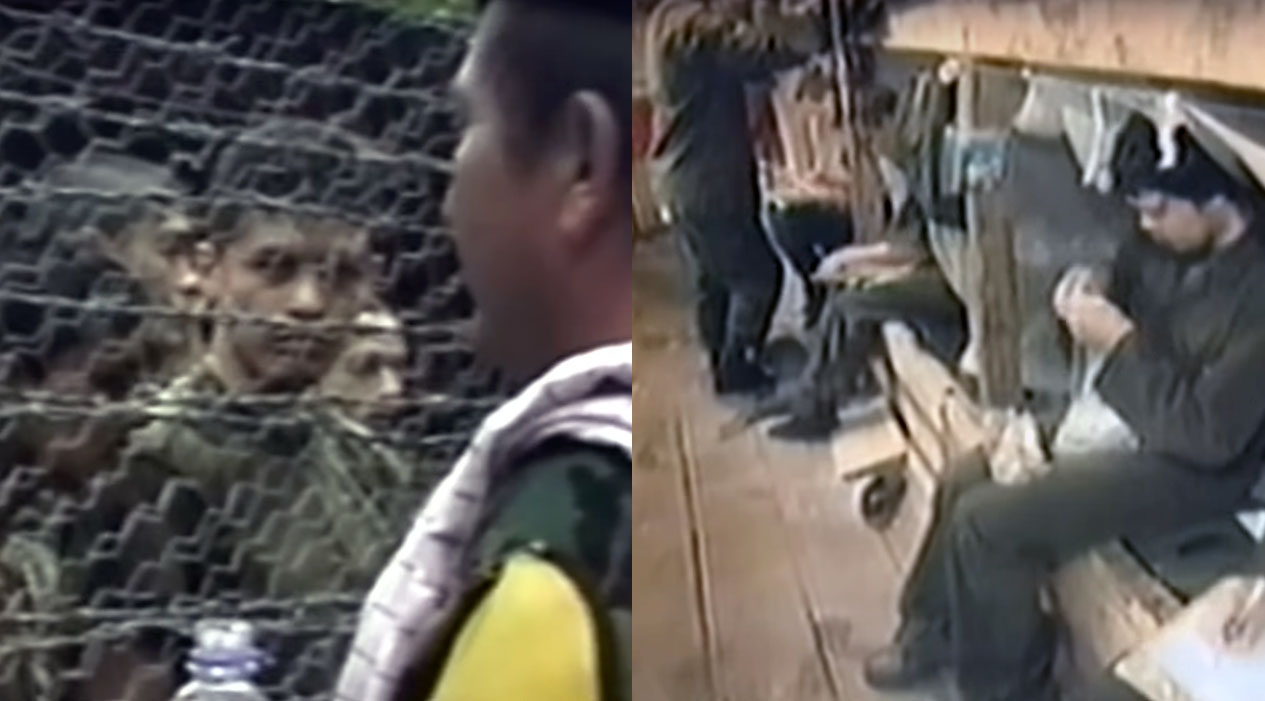Colombia once broke global kidnapping records, but the ongoing deescalation of the armed conflict and improved law enforcement has made the practice a minor threat for public security.
The practice has long been used by criminals for extortion purposes, but spiked in the 1980s when first the M-19 and then guerrilla groups like FARC, ELN, M-19, EPL and ERP began using the ransom payments to finance their revolt against the state.
The FARC, the largest of the groups, kidnapped for several reasons; civilians were held hostage in jungle camps for money, members of the political and economical elites were kidnapped for political leverage, and soldiers were massively held hostage as “prisoners of war.”

FARC hostages were either chained and taken with guerrilla units or imprisoned in jungle prison camps.
A thing of the past?
With the exception of the ELN, all Colombia’s guerrilla groups have demobilized, which has drastically reduced kidnapping and other conflict-related crimes.
At the moment, kidnapping is at the level where it was before the guerrillas took up the practice, but continues to be used for extortion purposes by organized crime groups.
Kidnappings per year
Source: Defense Ministry
While most victims of kidnapping fell in densely populated areas like Bogota and Antioquia, the practice was most common in traditional guerrilla areas.
Kidnappings per 100,000 inhabitants (2003 – 2012)
Source: Fundacion Pais Libre
Kidnapping: Good money, worst PR
According to the prosecution, the FARC alone received more than $2 billion through ransom payments over the decades. The revenue from ransom payments financed much of the expansion of the FARC’s army in the 1990s.
Fierce public rejection of the cruel revenue stream, however, ended much of the group’s popular support.

Millions of Colombians marched on February 4, 2008, to demand an end to the FARC and its kidnapping practices. (Image: Deviant Art)
The FARC announced in 2012 it would end its “economic retention” policy as they euphemistically called taking hostages for money. Some ELN units continue to kidnap, but not to the extent of the 1990s.
The FARC ultimately demobilized in 2017 and is on trial for between 2,500 and 8,500 kidnappings that took place between 1993 and 2012.
Finding justice
Colombia’s justice system virtually collapsed over the sheer number of war crimes committed by the many armed actors in the war. In more than three quarters of the kidnapping cases, no perpetrator was ever determined by a court.
The leaders of the FARC saw their first day in court in July 2018 after a peace deal in 2016.
Confirmed kidnappers (1970-2010)
Source: National Center for Historical Memory database
Presumed kidnappers (2003 – 2012)
Source: Fundacion Pais Libre


